
2006/06/29 21:02:09 55.84N 26.97E 10 5.7 Iran
USGS Felt map for this earthquake
USGS Felt reports page for Iran
SLU Moment Tensor Solution
2006/06/29 21:02:09 55.84N 26.97E 10 5.7 Iran
Best Fitting Double Couple
Mo = 5.82e+24 dyne-cm
Mw = 5.81
Z = 9 km
Plane Strike Dip Rake
NP1 40 50 60
NP2 262 48 121
Principal Axes:
Axis Value Plunge Azimuth
T 5.82e+24 67 243
N 0.00e+00 23 60
P -5.82e+24 1 151
Moment Tensor: (dyne-cm)
Component Value
Mxx -4.25e+24
Mxy 2.83e+24
Mxz -8.70e+23
Myy -7.18e+23
Myz -1.87e+24
Mzz 4.96e+24
--------------
----------------------
---------------------------#
-----------------------------#
-------------------------------###
----------------##########------####
----------############################
--------##########################---###
-----#############################-----#
----##############################--------
---##############################---------
-############# ###############----------
############## T ##############-----------
############# #############-----------
############################------------
#########################-------------
######################--------------
###################---------------
#############-----------------
#######---------------- --
-------------------- P
--------------
Harvard Convention
Moment Tensor:
R T F
4.96e+24 -8.70e+23 1.87e+24
-8.70e+23 -4.25e+24 -2.83e+24
1.87e+24 -2.83e+24 -7.18e+23
Details of the solution is found at
http://www.eas.slu.edu/Earthquake_Center/NEW/20060628210209/index.html
|
The focal mechanism was determined using broadband seismic waveforms. The location of the event and the station distribution are given in Figure 1.

|
|
|
STK = 40
DIP = 50
RAKE = 60
MW = 5.81
HS = 9
The solution given here is from the surface--wave spectral amplitude technique.
The P-wave first motion data for focal mechanism studies are as follow:
Sta Az(deg) Dist(km) First motion GNI 328 1785 iP_C MALT 312 2056 iP_C KSDI 294 2059 iP_D CSS 298 2319 iP_C
The following stations were not used because of excessive low frequency noise in the deconvolved waveforms:
NODAL PLANES
STK= 40.00
DIP= 50.00
RAKE= 59.99
OR
STK= 261.93
DIP= 48.45
RAKE= 120.79
DEPTH = 9.0 km
Mw = 5.81
Best Fit 0.8522 - P-T axis plot gives solutions with FIT greater than FIT90
 |
The P-wave first motion data for focal mechanism studies are as follow:
Sta Az(deg) Dist(km) First motion GNI 328 1785 iP_C MALT 312 2056 iP_C KSDI 294 2059 iP_D CSS 298 2319 iP_C
Surface wave analysis was performed using codes from Computer Programs in Seismology, specifically the multiple filter analysis program do_mft and the surface-wave radiation pattern search program srfgrd96.
The velocity model used for the search is a modified Utah model .
Digital data were collected, instrument response removed and traces converted
to Z, R an T components. Multiple filter analysis was applied to the Z and T traces to obtain the Rayleigh- and Love-wave spectral amplitudes, respectively.
These were input to the search program which examined all depths between 1 and 25 km
and all possible mechanisms.

|
|
|

|
| Pressure-tension axis trends. Since the surface-wave spectra search does not distinguish between P and T axes and since there is a 180 ambiguity in strike, all possible P and T axes are plotted. First motion data and waveforms will be used to select the preferred mechanism. The purpose of this plot is to provide an idea of the possible range of solutions. The P and T-axes for all mechanisms with goodness of fit greater than 0.9 FITMAX (above) are plotted here. |

|
| Focal mechanism sensitivity at the preferred depth. The red color indicates a very good fit to the Love and Rayleigh wave radiation patterns. Each solution is plotted as a vector at a given value of strike and dip with the angle of the vector representing the rake angle, measured, with respect to the upward vertical (N) in the figure. Because of the symmetry of the spectral amplitude rediation patterns, only strikes from 0-180 degrees are sampled. |
Sta Az(deg) Dist(km) GNI 328 1785 MALT 312 2056 KSDI 294 2059 CSS 298 2318 AML 40 2338 EKS2 38 2382 UCH 40 2397 KZA 42 2435 KBK 40 2455 USP 38 2471 ULHL 42 2512 TKM2 40 2515 ANTO 310 2564 LAST 295 3022 IDI 295 3077 VOS 20 3125 BRVK 19 3135 GVD 294 3143 KURK 30 3268 ARU 3 3281 VTS 309 3421 LSA 77 3461 KIEV 327 3468 OBN 339 3495 KMBO 216 3690 DIVS 310 3723 TIP 301 3857 PSZ 316 3884 MBAR 225 4063
Since the analysis of the surface-wave radiation patterns uses only spectral amplitudes and because the surfave-wave radiation patterns have a 180 degree symmetry, each surface-wave solution consists of four possible focal mechanisms corresponding to the interchange of the P- and T-axes and a roation of the mechanism by 180 degrees. To select one mechanism, P-wave first motion can be used. This was not possible in this case because all the P-wave first motions were emergent ( a feature of the P-wave wave takeoff angle, the station location and the mechanism). The other way to select among the mechanisms is to compute forward synthetics and compare the observed and predicted waveforms.
The velocity model used for the waveform fit is a modified Utah model .
The fits to the waveforms with the given mechanism are show below:

|
This figure shows the fit to the three components of motion (Z - vertical, R-radial and T - transverse). For each station and component, the observed traces is shown in red and the model predicted trace in blue. The traces represent filtered ground velocity in units of meters/sec (the peak value is printed adjacent to each trace; each pair of traces to plotted to the same scale to emphasize the difference in levels). Both synthetic and observed traces have been filtered using the SAC commands:
hp c 0.01 3 lp c 0.05 3

|

|
The figures below show the observed spectral amplitudes (units of cm-sec) at each station and the
theoretical predictions as a function of period for the mechanism given above. The modified Utah model earth model
was used to define the Green's functions. For each station, the Love and Rayleigh wave spectrail amplitudes are plotted with the same scaling so that one can get a sense fo the effects of the effects of the focal mechanism and depth on the excitation of each.
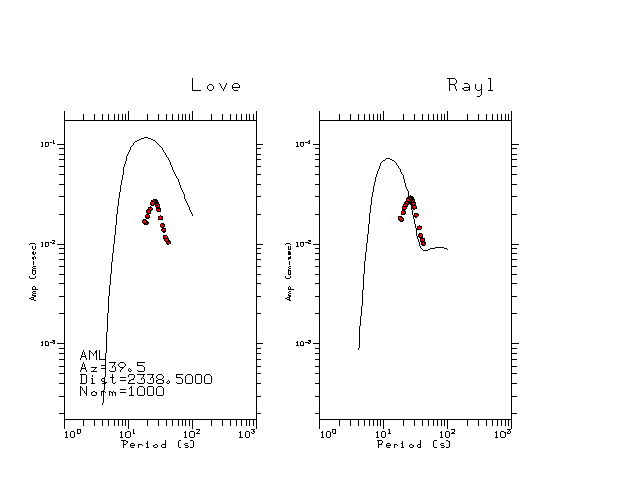 |
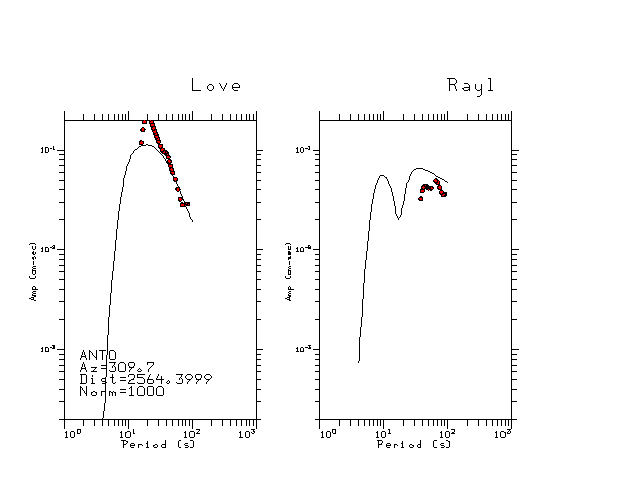 |
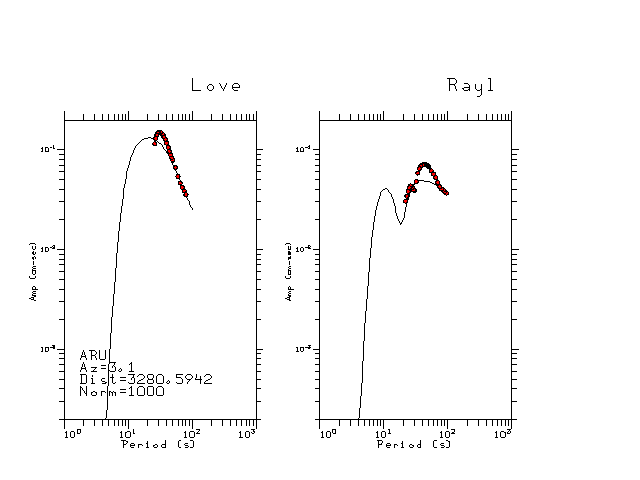 |
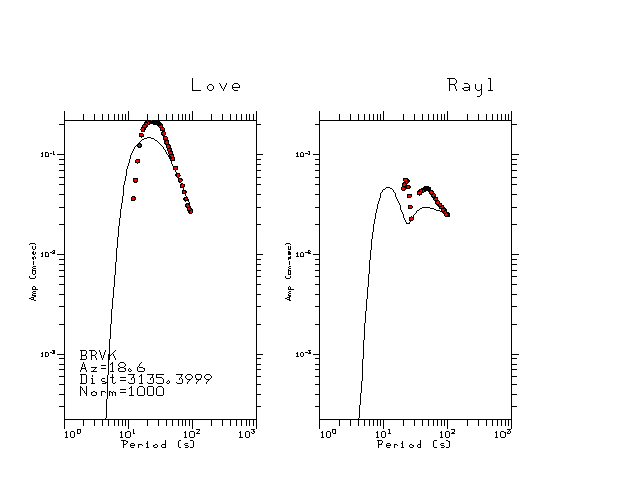 |
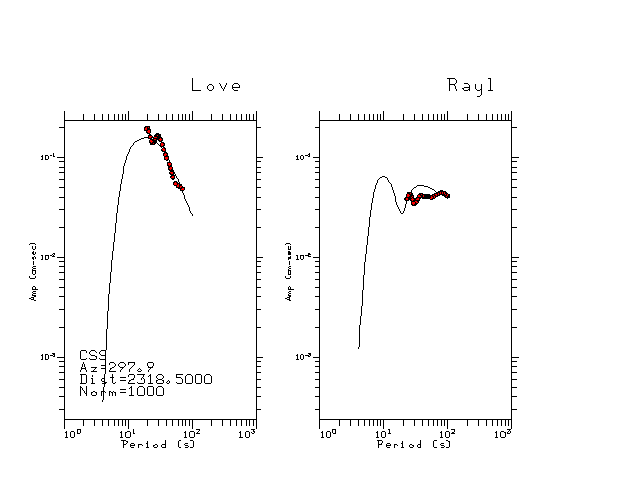 |
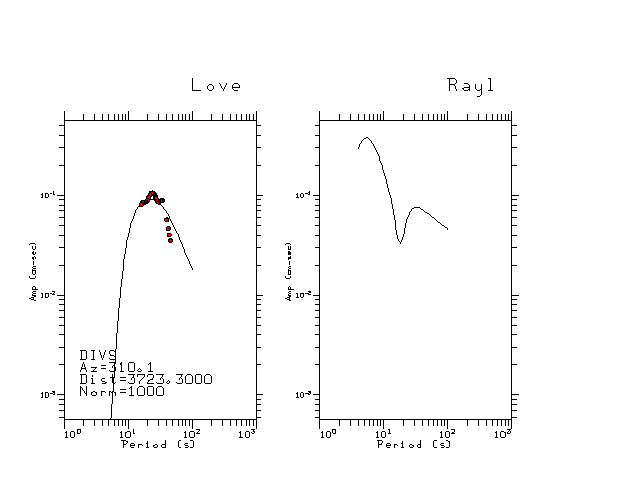 |
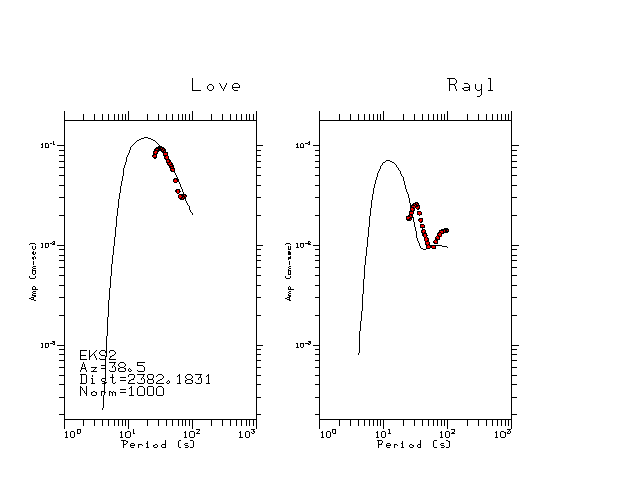 |
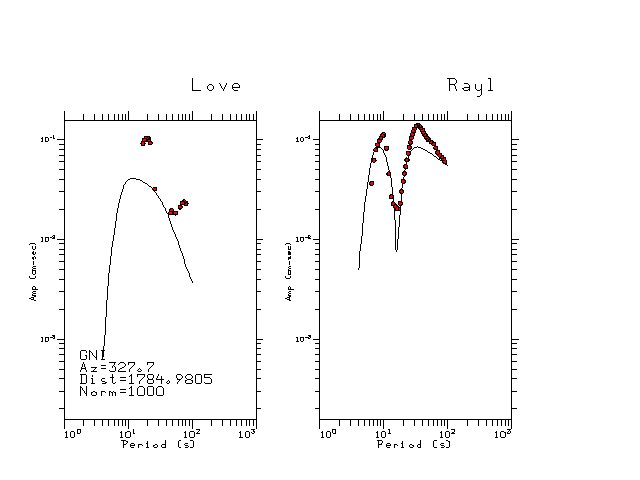 |
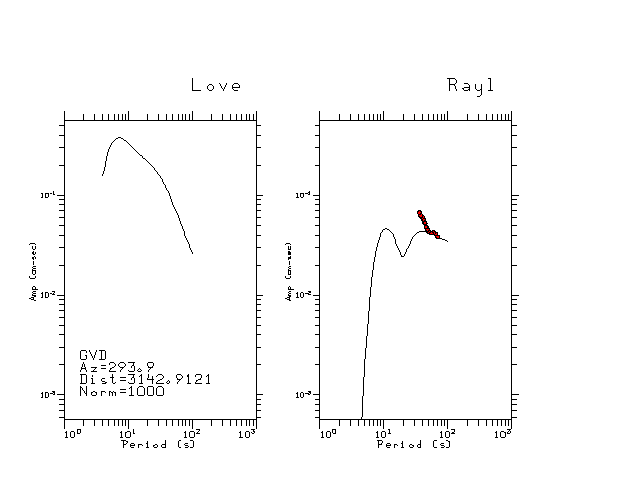 |
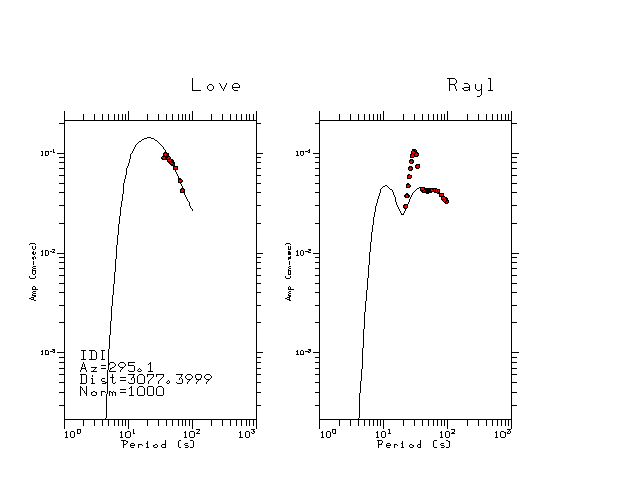 |
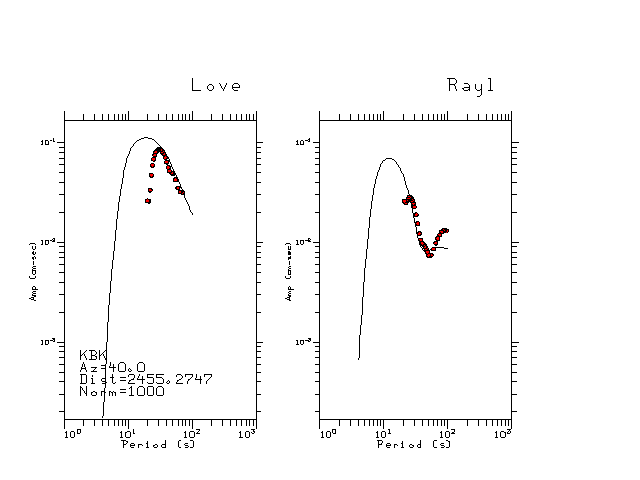 |
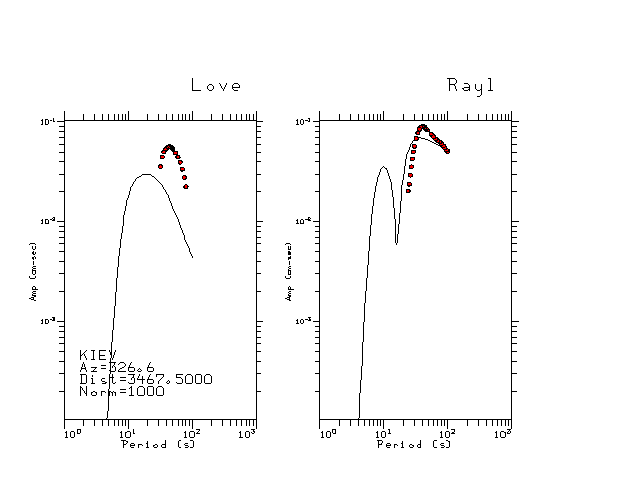 |
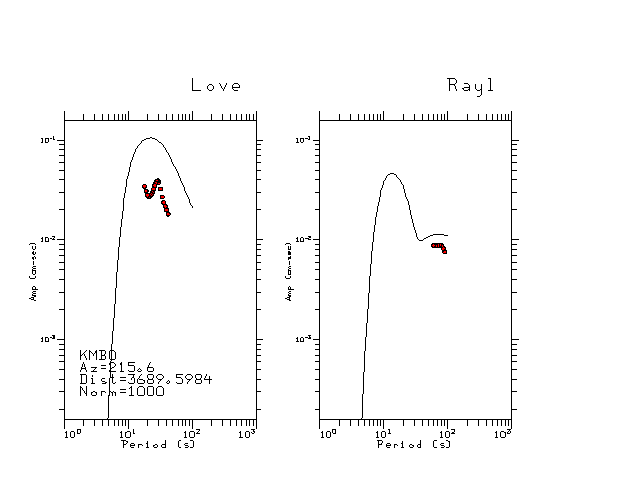 |
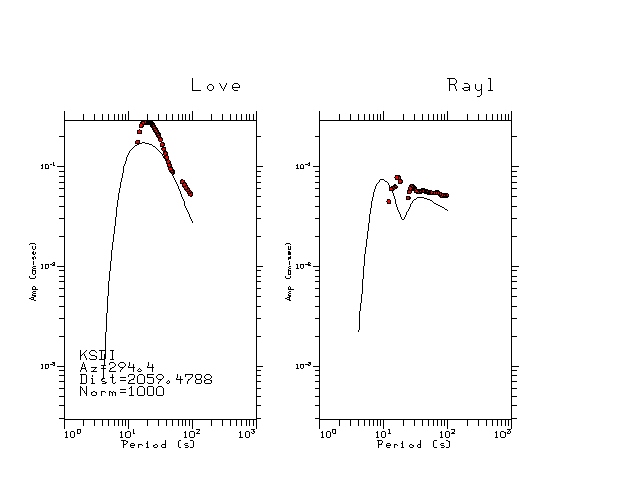 |
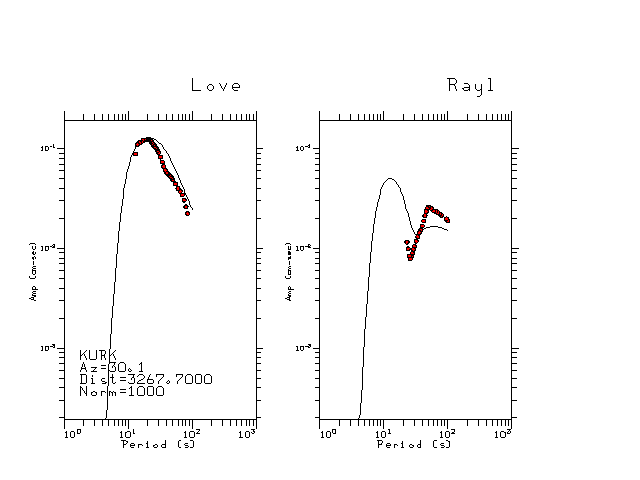 |
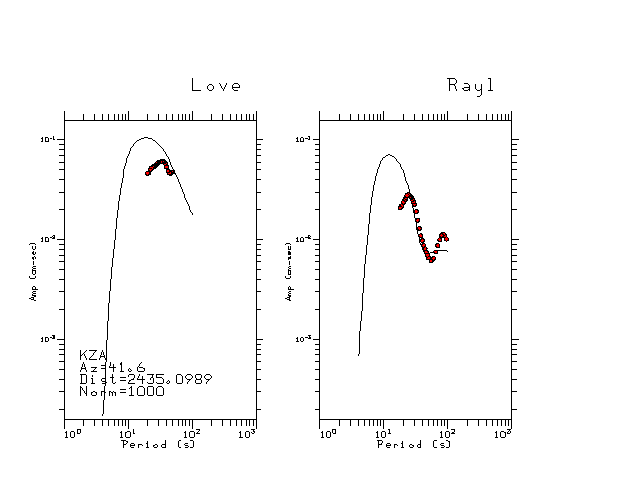 |
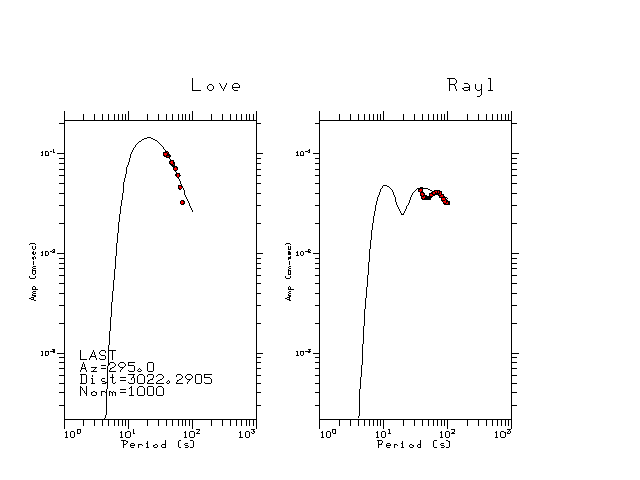 |
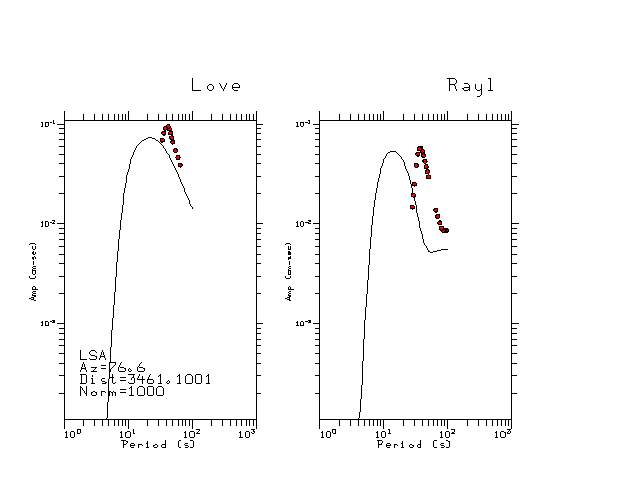 |
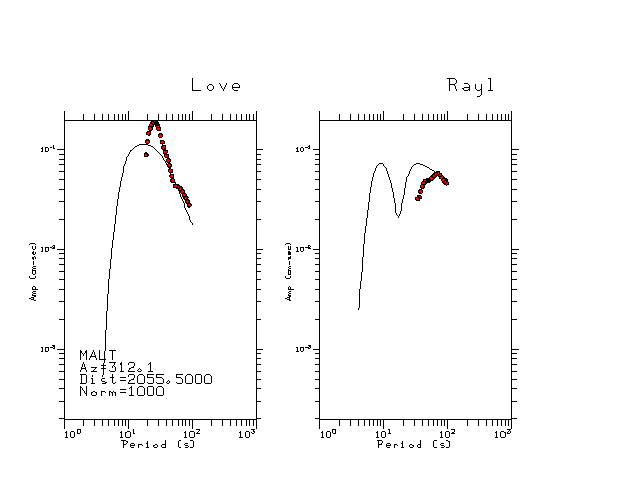 |
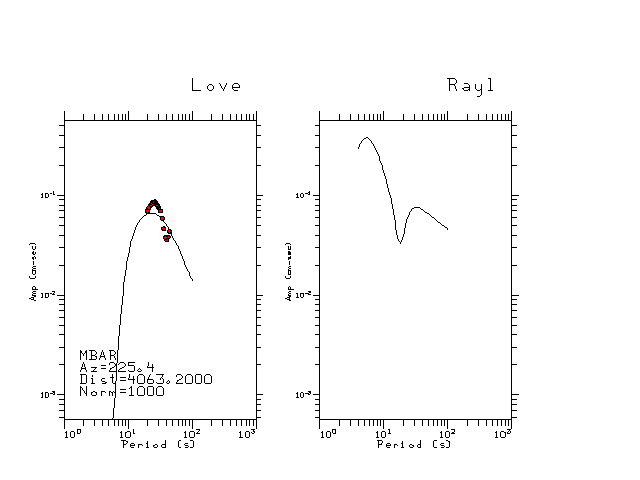 |
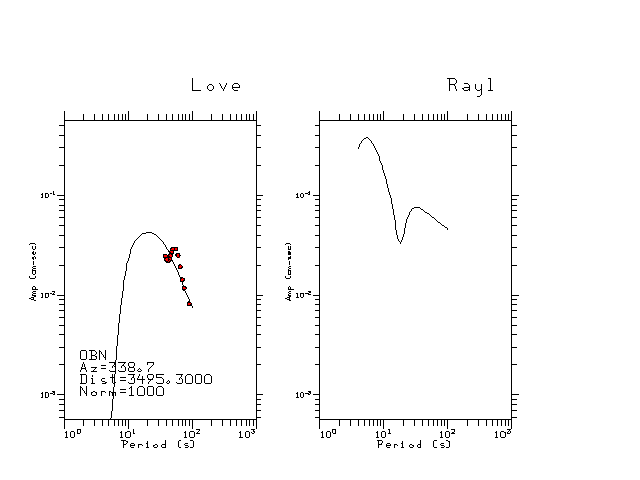 |
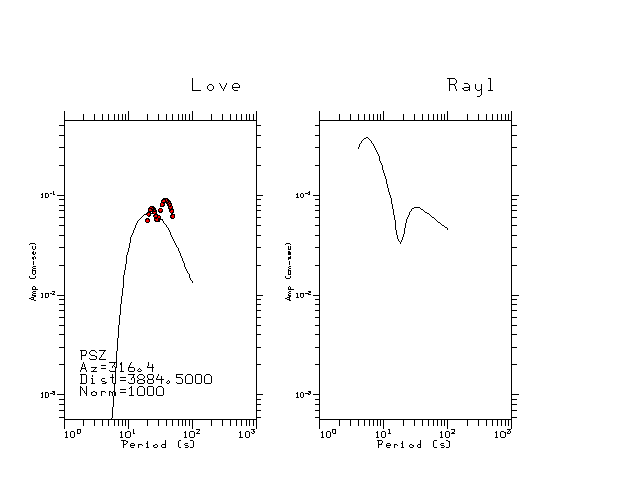 |
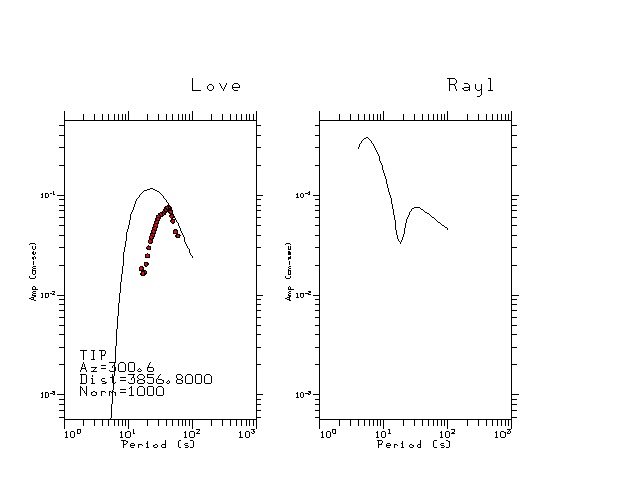 |
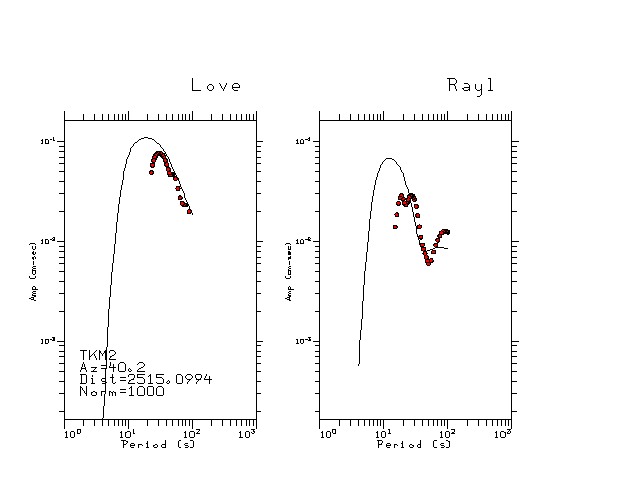 |
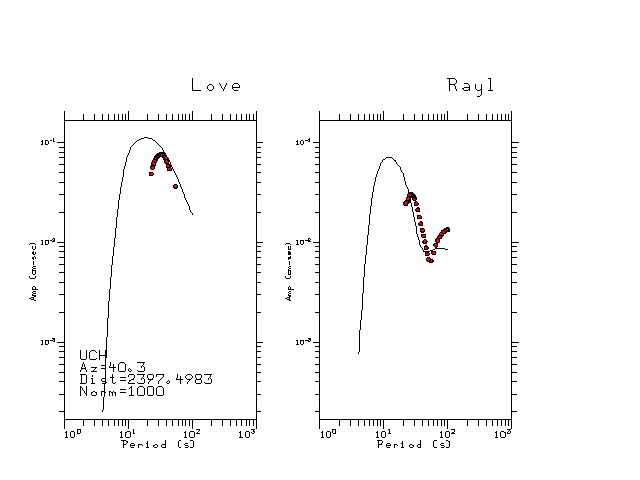 |
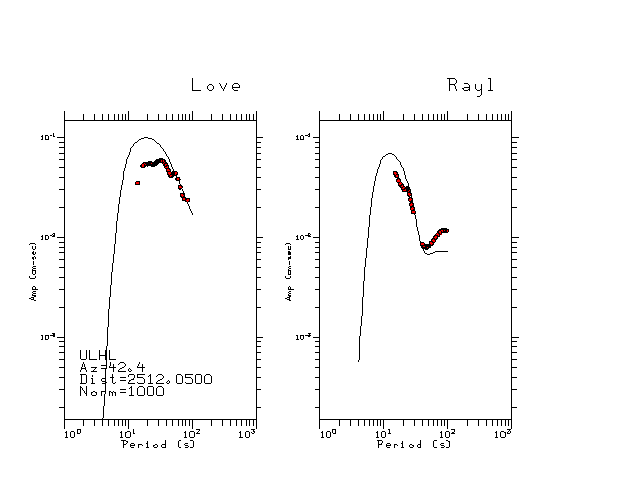 |
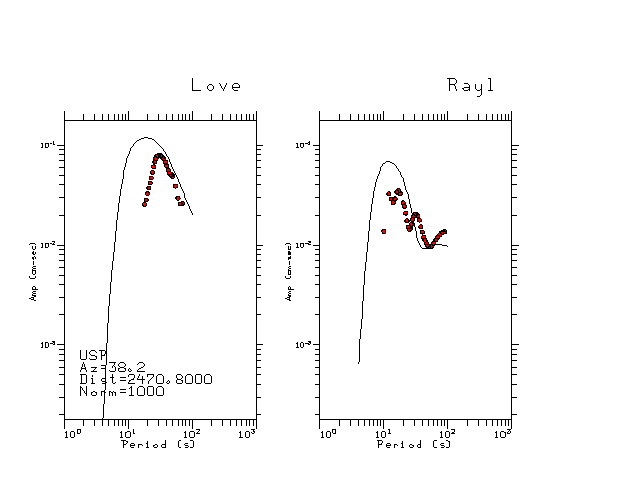 |
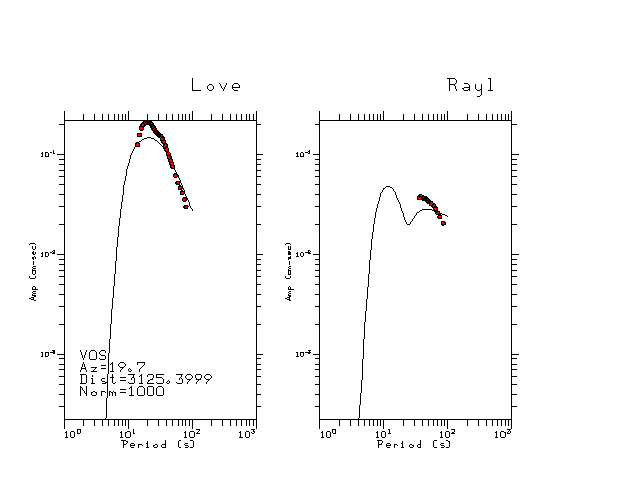 |
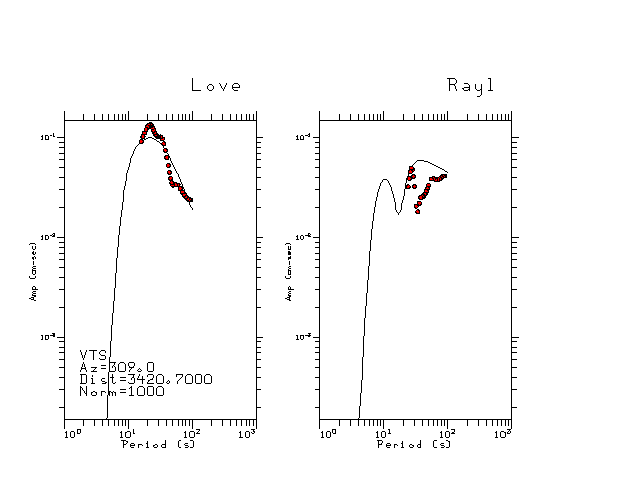 |